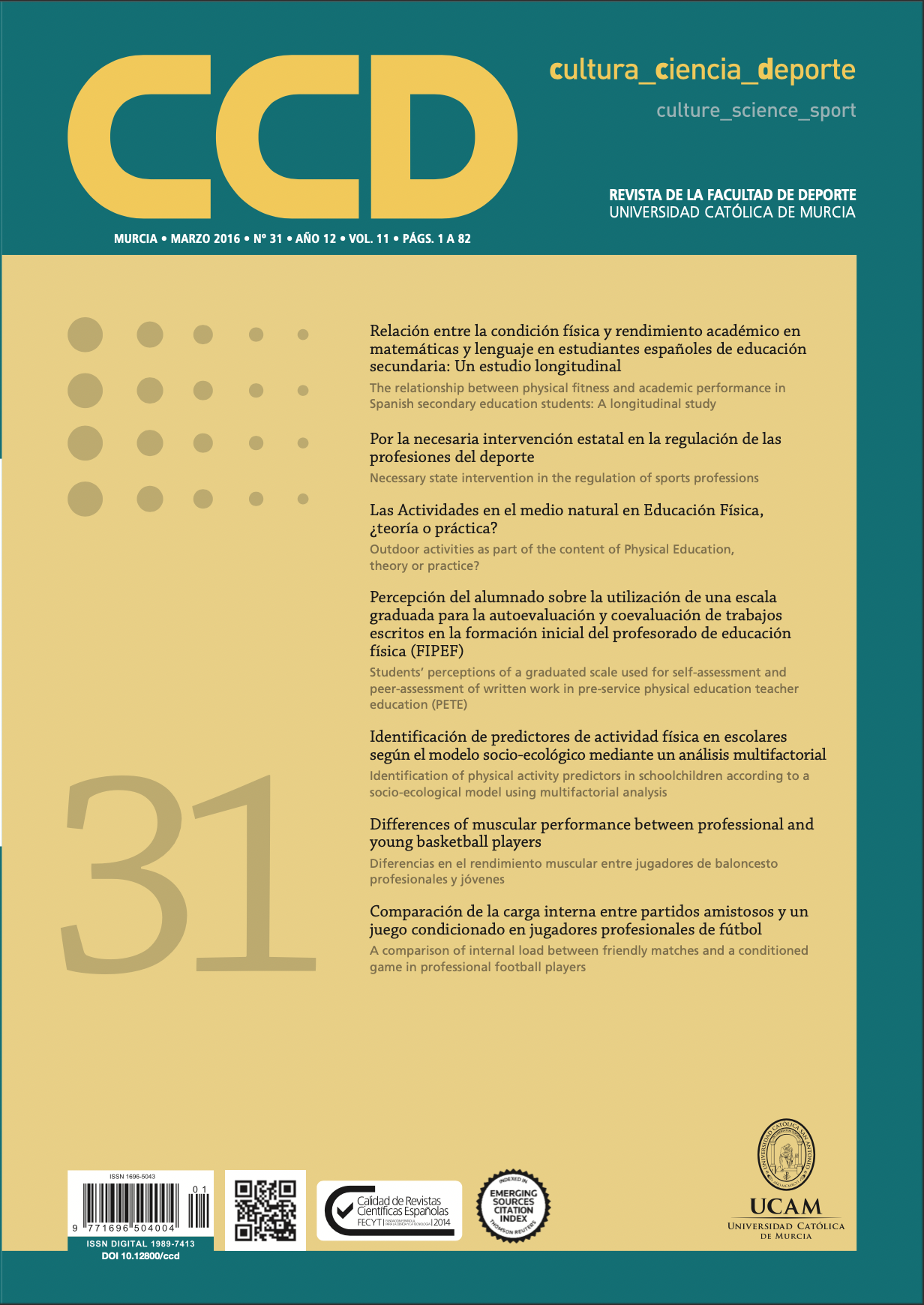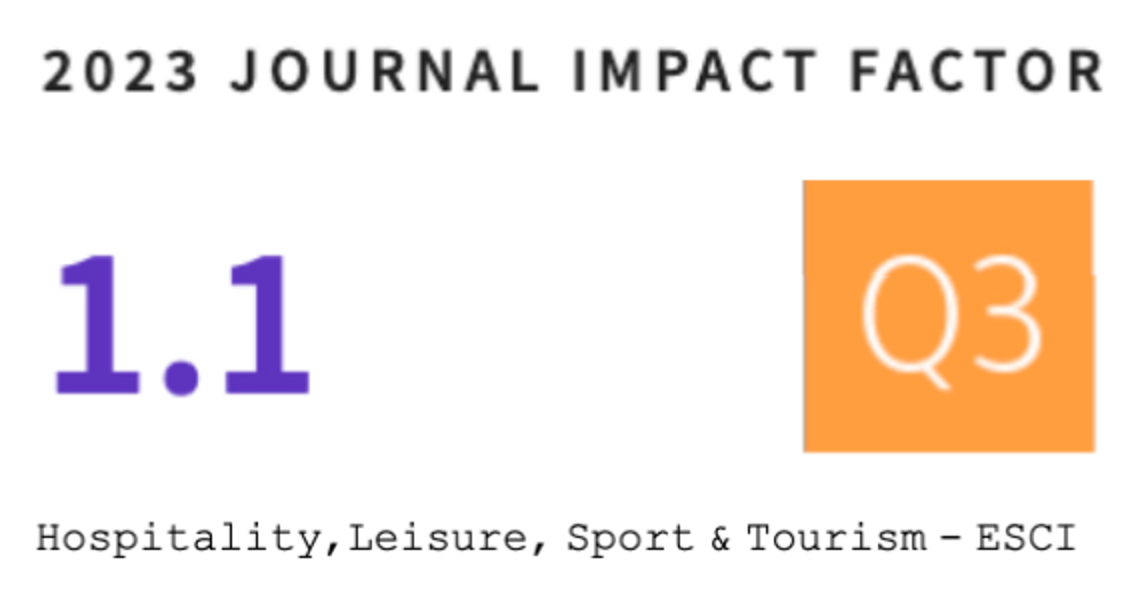Differences of muscular performance between professional and young basketball players. (Diferencias en el rendimiento muscular entre jugadores de baloncesto profesionales y jóvenes).
DOI:
https://doi.org/10.12800/ccd.v11i31.643Abstract
http://dx.doi.org/10.12800/ccd.v11i31.643
High performance in a vertical jump, ability to repeat short sprints (RSA) and muscle power are all three most relevant factors for professional basketball players. Still, there is a lack of studies analyzing the differences of these variables between professional and young basketball players. The aim of this research is to study the differences on the vertical jump, the RSA and mechanical power between professional and elite young basketball players. For this, 11 professional (n = 11, age = 24.3 ± 5.5 years, height = 200 ± 10.4 cm, weight = 98.4 ± 8.7 kg) and nine elite young basketball players (n = 9, age = 15.2 ± 0.4 years, height = 190 ± 6.5 cm, weight = 78.2 ± 5.2 kg) were tested on the Repeated Sprint Test (RAST), Countermovement Jump (CMJ) before and after the RAST, 35 m sprint, and the mechanical power produced in these. The results show non-significance between groups as regards the RAST fatigue index, CMJ height and 35 m sprint time. However, professional players produced significantly more power in these variables than young elite players (p < 0.05 - 0.001). These findings may have significant practical relevance on training programs intended for young basketball players.
Key words: Adolescents, fitness, muscle power, sport.
===
Resumen
El alto rendimiento en el salto vertical, la capacidad de repetir sprints (RSA) y la potencia muscular son 3 de las variables más importantes para los jugadores de baloncesto profesionales. Sin embargo, hay pocos estudios que analicen las diferencias en estas variables entre jugadores jóvenes de alto nivel y sujetos profesionales. El objetivo de este estudio es analizar las diferencias en el salto vertical (CMJ), la RSA y la potencia muscular entre jugadores de baloncesto profesionales y jóvenes talentos. Para ello, un test de RSA, el CMJ antes y después del test de RSA, el sprint de 35 m y la potencia en dichas variables fueron medidas a 11 jugadores de baloncesto profesionales (n = 11, edad = 24.3 ± 5.5 años, altura = 200 ± 10.4 cm, peso = 98.4 ± 8.7 kg) y a 9 jugadores jóvenes de élite (n = 9, edad = 15.2 ± 0.4 años, altura = 190 ± 6.5 cm, peso = 78.2 ± 5.2 kg). Los resultados muestran que no hay diferencias significativas entre grupos en la fatiga en el test de RSA, la altura alcanzada en el CMJ o el sprint de 35 m. Sin embargo, los jugadores profesionales produjeron significativamente más potencia en estas variables que los jóvenes (p < 0.05 - 0.001). Estos hallazgos pueden tener relevancia práctica en el diseño de los programas de entrenamiento para jugadores jóvenes de baloncesto.
Palabras clave: Adolescentes, condición física, potencia muscular, deporte.
Downloads
How to Cite
Issue
Section
License
The authors who publish in this journal agree with the following terms:
- The authors retain the copyright and guarantee the journal the right to be the first publication of the work as well as licensed under a Creative Commons Attribution License that allows others to share the work with recognition of the authorship of the work and the initial publication in this journal.














